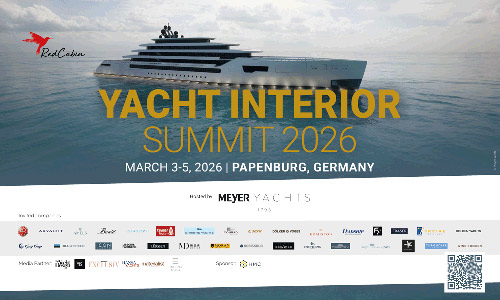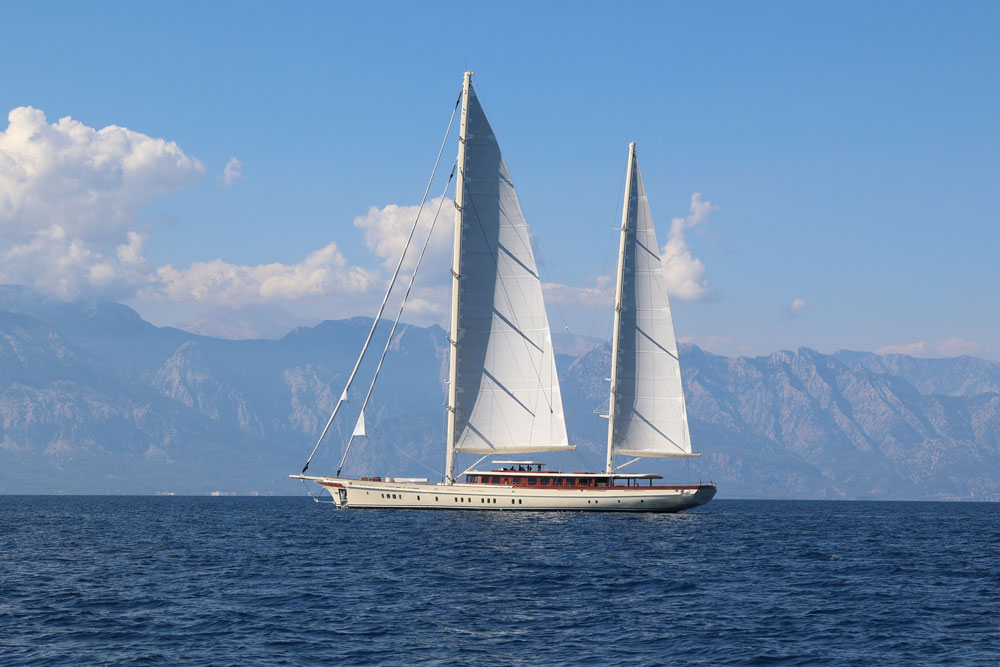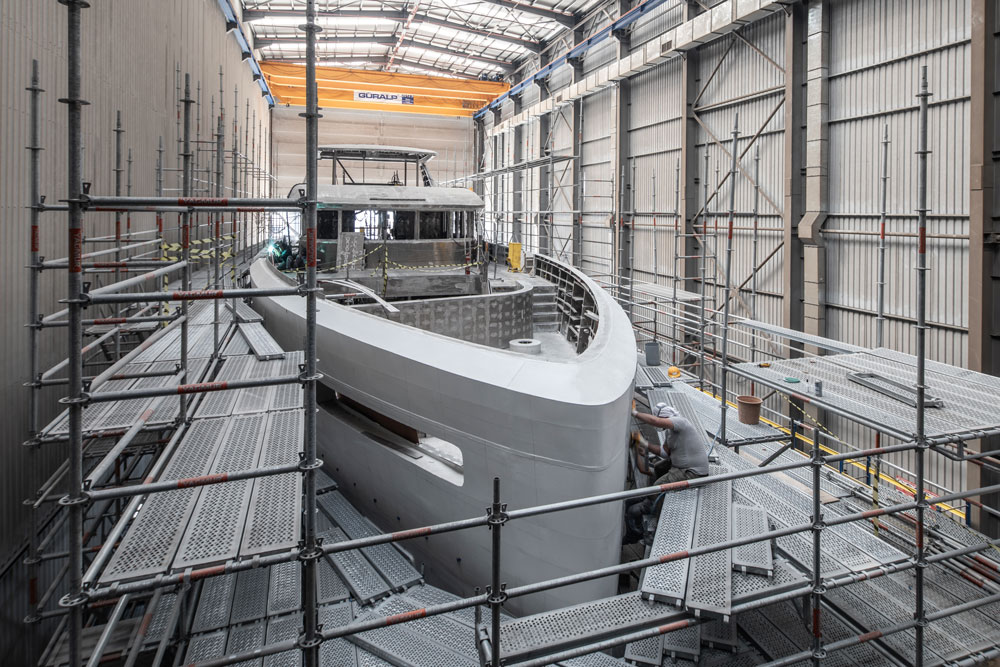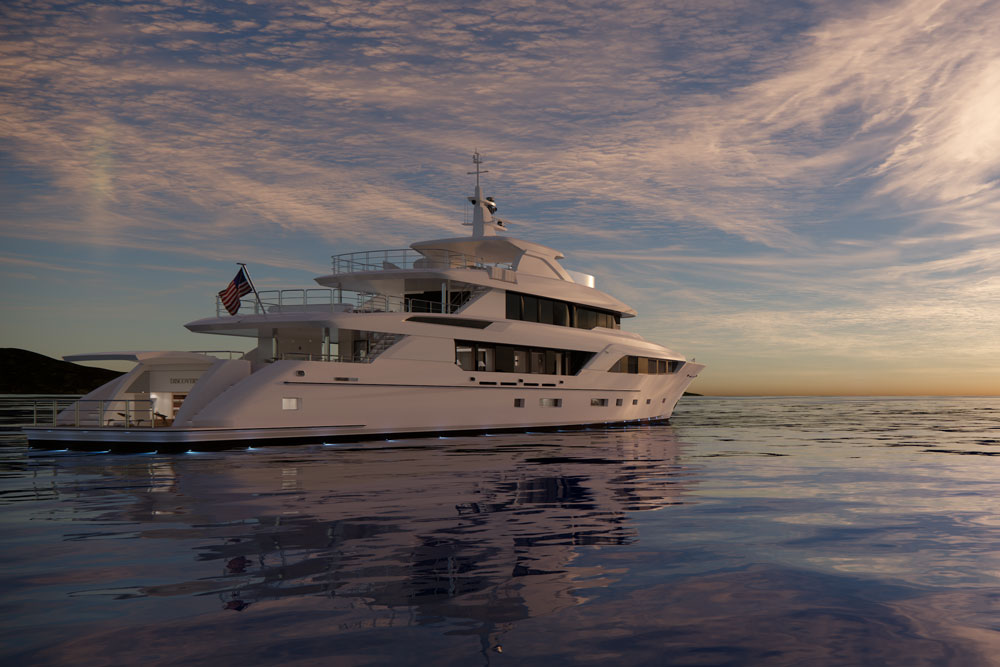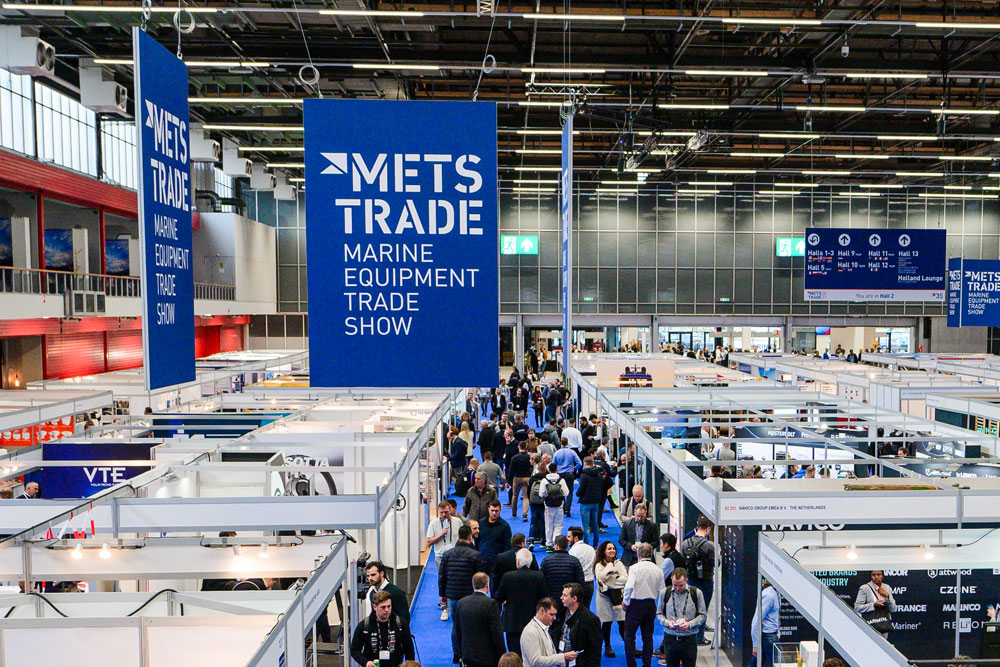At the shipyard of the Dutch yacht building company Feadship in Amsterdam, the as yet unnamed 119-metre-long megayacht with the project name “Feadship 821” was recently undocked: the world’s first megayacht with a hydrogen fuel cell, which is due to be launched this year.
The hydrogen-powered newbuild, which is the shipyard’s largest to date – it is said to be the 44th largest yacht in the world – has a width of 19 m, a draught of 5.25 m and a volume of 7,247 GT.
The exterior and interior design of the “Feadship 821” was created by the British firm RWD. Up to 30 guests in 12 cabins and 44 crew members will be accommodated on board the yacht, which has a steel hull with aluminum superstructure. It will be powered by three MTU engines for a top speed of 17 knots. According to the shipyard, this is the world’s first superyacht to be powered by a pure green hydrogen fuel source, as part of the shipyard’s approach to achieving net-zero propulsion by 2030.
Hydrogen for short distances
It should be noted, however, that there is space on board for fuel cell technology to provide this form of propulsion for cruises between individual ports at speeds of up to 10 knots without noise or emissions, or for the yacht’s hotel operations. Project 821 cannot travel longer distances or even cross oceans on hydrogen, as it does not have sufficient storage capacity.
The development of the ship took five years with the help of the classification society Lloyd’s Register and included the construction of appropriately dimensioned equipment as well as the simultaneous development of protocols and safety regulations, as there was a lack of regulations at all levels.
The hydrogen fuel cell produces only water vapor as an exhaust gas, but the biggest challenge is that the storage of compressed liquid hydrogen in tanks must take place at -253 °C (-423.4 °F). Ten times more space is needed to store hydrogen than to store diesel. Due to its size, “Project 821” was the perfect candidate for this, according to the shipyard, as it was possible to set up a dedicated storage room on board with double-walled cryogenic storage tanks that can hold 92 square meters of hydrogen.
For longer voyages, Project 821 relies on 3,200 kW ABB pod drives powered by three 2,500 kW MTU generators running on hydrogenated vegetable oil (HVO), a system developed by Feadship. The fuel bunker has a volume of 575 m³, and at a service speed of 14 knots, the range is around 6,500 nm.
On board there is also a patented waste heat recovery system from Feadship that heats the pools and whirlpools as well as the steam bath, the air, the floors and towel rails in the bathrooms. An intelligent air conditioning system helps with energy management and automatically reduces the air conditioning or heating in guest rooms that are left unoccupied for long periods. The yacht has amenities for guests such as a semi-submerged Neptune lounge, a cinema, a library, a hospital facility and an 8.2-meter pool with counter-current system. Light-enhancing elements in the ship include an atrium with a staircase that wraps around the elevator and floor-to-ceiling windows with clear glass balustrades that provide unobstructed views.
In various internet forums, Microsoft co-founder Bill Gates is named as the client for the yacht, which will cost around €600 million, and he declared back in 2019 that he had ordered a hydrogen yacht. However, this has not yet been confirmed. (CE)








